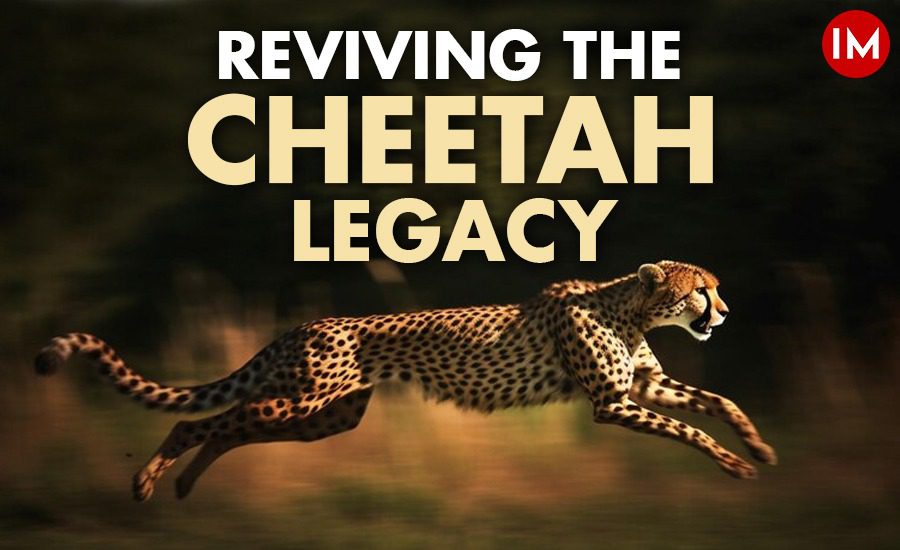In the vast expanse of Gujarat’s Kutch district lies a pristine wilderness, a realm where nature’s delicate balance once resonated with the exhilarating speed and grace of cheetahs. Banni, spanning a colossal 2,500 square kilometers, is not just any grassland; it’s a living testament to biodiversity, teeming with a mosaic of life that has thrived for centuries.
Now, a groundbreaking initiative is underway to revive the lost legacy of these majestic predators, as the government greenlights the establishment of a cheetah conservation breeding center in the heart of Banni.
In an exclusive conversation with Indian Masterminds, IFS officer Nityanand Srivastava who is the Principal Chief Conservator of Forests (PCCF) as well as the Chief Wildlife Warden of Gujarat, unveiled the ambitious plans for cheetah breeding and conservation in the region.
CHEETAH REINTRODUCTION
After the successful reintroduction of these swift felines in Madhya Pradesh’s Kuno National Park, the spotlight now turns to Gujarat’s Banni grassland.
Mr. Srivastava said, “This project is a significant milestone, but it’s important to note that the journey has just begun. The government’s approval is the first step, and there are administrative formalities and approvals that lie ahead. Only after securing those necessary clearances can we establish a concrete timeline for this transformative initiative,”
Banni’s historical connection with cheetahs dates back to the 1950s when the grassland echoed with the elusive growls and meows, and lightning fast sprints of these big cats. The last of the cheetahs were declared extinct in Banni, marking the end of an era. The proposed breeding center aims to recreate a controlled environment where the cheetahs can thrive, paving the way for a potential reintroduction into their ancestral habitat.
“The breeding center will be a hub of meticulous conservation efforts. Our primary goal is to ensure the successful breeding of cheetahs in captivity. Once achieved, we can strategically decide which areas of Banni will benefit from the reintroduction of these magnificent predators,” explained Mr. Srivastava.
BANNI GRASSLAND
The success of the breeding program will determine the specific area in which the cheetah population will be enhanced. Currently, the reintroduction of cheetahs into the wild is not feasible due to the absence of herbivores in the region. Establishing Banni as a cheetah reintroduction sanctuary is a distant goal. “Our immediate objective is to establish a breeding center in Banni, which was historically a habitat for cheetahs,” said Mr. Srivastava.
Mr. Srivastava further informed that specific details such as the number of cheetahs for reintroduction, their source, enclosure specifications, and modern facilities are yet to be discussed, but the dream of witnessing cheetahs grace the Banni grassland once again is gaining momentum.
Banni, with its 52 villages and the cherished Banni breed of buffaloes, is not just a haven for cheetahs; it’s a thriving ecosystem supporting various species, from the Indian wolf and jackal to the Indian gazelle and myriad bird species.






























